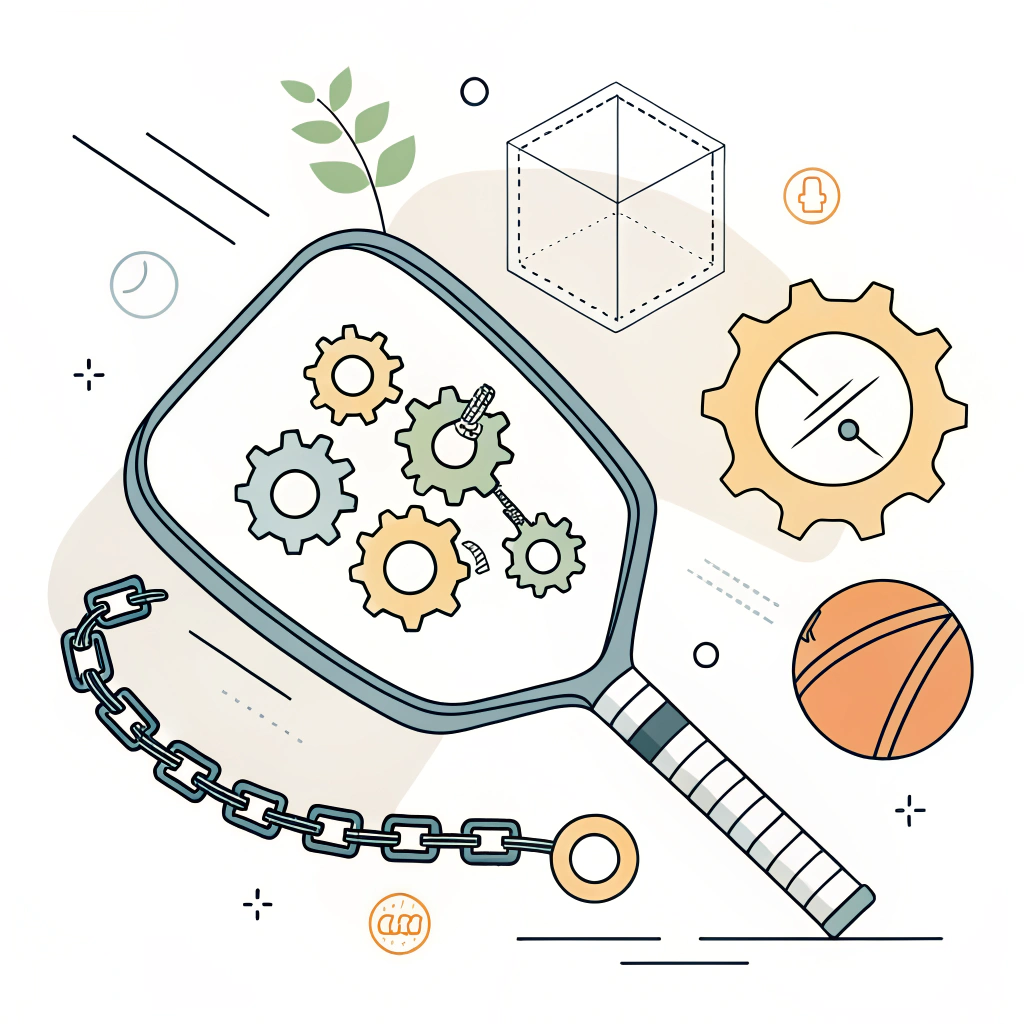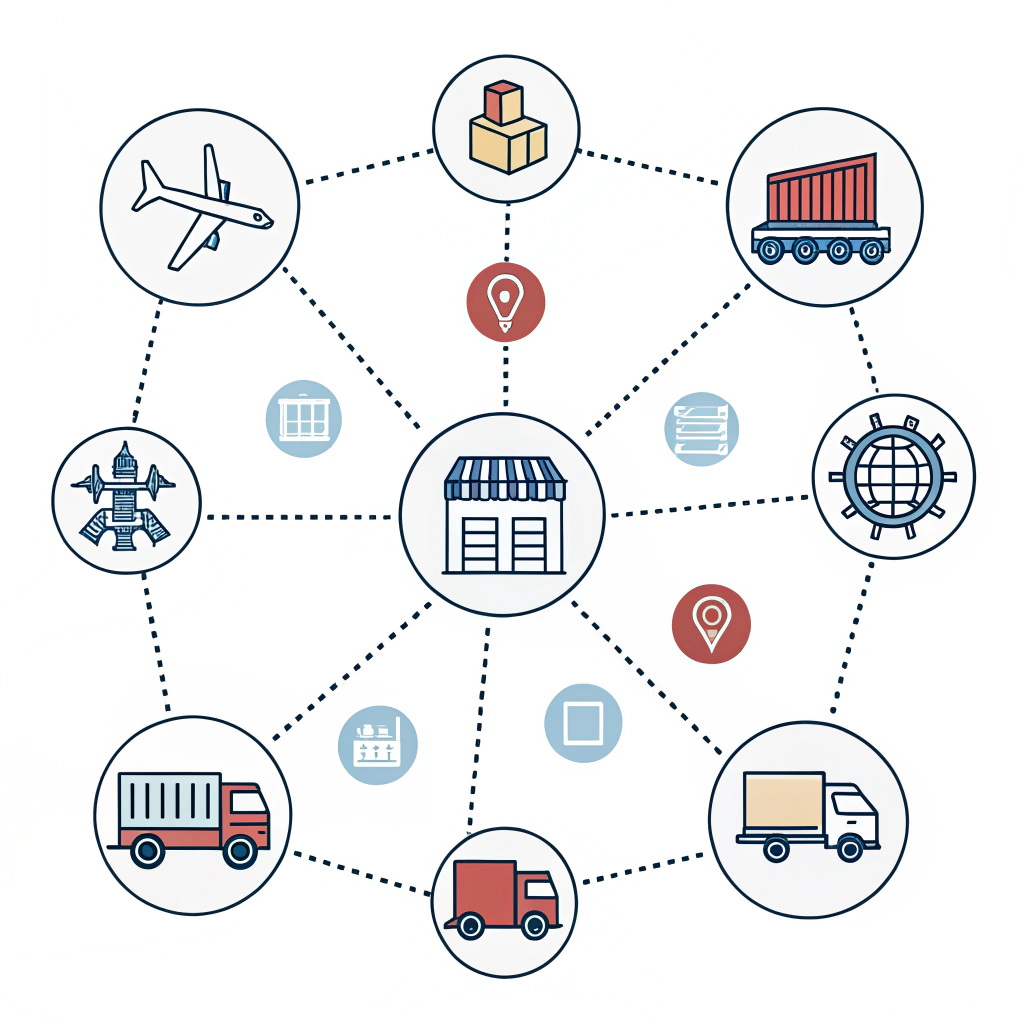Rapid Answer: Starting a pickleball business involves clear market research, strategic planning, a well-defined supply chain1, and partnering with reliable manufacturers like NEX Pickleball. By understanding the production processes, selecting the right materials, and engineering effective manufacturing partnerships, entrepreneurs can launch a successful venture with a competitive edge in this growing market.
In today’s evolving sports equipment landscape, establishing a pickleball business presents enormous opportunities. However, potential entrepreneurs must navigate complex supply chains, production process2 techniques, and market entry strategies. As a mid-career entrepreneur or small business owner entering this niche market, you need a step-by-step guide that not only explains the production processes but also provides actionable strategies to secure reliable manufacturers and sustain profit margins.
The pickleball market is expanding rapidly, with more individuals and communities embracing this sport. For business owners, the opportunity to offer high-quality, performance-enhancing equipment is enticing. However, the challenges lie in:
• Understanding the production process2 behind high-performance pickleball paddles.
• Evaluating the pros and cons of various manufacturing procedures like hot pressing3, cold pressing4, and thermoforming5.
• Securing a dependable manufacturing partner that provides competitive pricing, quality assurance, and innovative design.
• Navigating the competitive landscape while keeping cost structure, supply chain management, and startup expenses in check.
These challenges, if not addressed, can lead to compromised product quality, unsatisfied customers, and ultimately, business failure.
At the heart of a successful pickleball business is supply chain1 excellence. The following factors significantly impact the outcome of your business venture:
-
Material Selection:
High-performance paddles are crafted from premium materials like carbon fiber (3K, 12K, T300) and fiberglass. Each material brings its own benefits in terms of strength, flexibility, and ball control. -
Production Process Choices:
- Hot Pressing3: Delivers robust production but might alter the paddle's ultrafine properties.
- Cold Pressing4: Maintains the delicate balance and feel but may lower production speed.
- Thermoforming5: Provides intricate designs though it requires a longer production cycle.
-
Quality Assurance:
Partnering with a proven manufacturer like NEX Pickleball, known for consistent quality control through rigorous testing, ensures that every paddle meets stringent performance standards. -
Market Dynamics & Cost Structure:
Successful market entry depends on not only quality products but also a lucid business model that reflects startup investments, ongoing operational costs, and a clear path to profitability.
The following solution-oriented steps will help you understand and navigate the journey from concept to market, ensuring you make well-informed decisions.
-
Conduct a Comprehensive Market Analysis:
Identify key competitors, customer segments, and regional demand for pickleball equipment. Pinpoint any existing gaps where your product can create value. -
Define Your Business Model:
Decide if you will operate as a franchise, wholesale distributor, or direct-to-consumer brand. Keep in mind different cost structures, customer acquisition strategies, and profit margins. -
Develop a Startup Checklist:
Create a comprehensive list of the following:
• Initial capital requirements
• Operational expenses (equipment, facility lease/purchase, labor)
• Marketing and promotional budgets
• Pre-launch testing and product certifications
Choosing the right partner is crucial. Consider the following when evaluating potential manufacturers:
-
Experience and Industry Reputation:
Ensure the manufacturer has a strong portfolio in producing high-performance sports equipment. NEX Pickleball, for example, produces paddles for well-known brands like Joola and Selkirk. -
Production Techniques:
Understand their use of hot pressing3, cold pressing4, and thermoforming5 techniques. Each method offers distinct advantages for production efficiency or paddle performance. -
Quality Control Processes:
Ensure the manufacturer follows rigorous testing procedures and adheres to international quality standards. -
Customization and Scalability:
Verify that the partner can accommodate custom designs and various order volumes, ensuring flexibility as your business grows.
When it comes to manufacturing your paddle, production process is key. The following table provides a quick comparison to help you decide:
| Production Process | Advantages | Disadvantages |
|---|---|---|
| Hot Pressing | High efficiency, strong paddles, excellent impact resistance | May alter material properties, high equipment investment |
| Cold Pressing | Precise control over thickness and structure, retains material properties | Longer production cycles, demands high-quality pressure control equipment |
| Thermoforming | Allows intricate designs, precise material distribution | Longer production time, higher costs, suited for premium products |
By weighing these factors, you can make informed decisions about the trade-offs between production speed, product quality, and cost efficiency.
The material selection is critical for ensuring performance and durability. Here are some common materials that define the paddle’s performance:
-
Carbon Fiber:
- 3K Carbon Fiber enhances rebound and reduces vibration.
- 12K Carbon Fiber is ideal for competitive play due to its smooth surface and exceptional impact resistance.
- T300 Carbon Fiber balances strength and light weight, perfect for high-performance needs.
-
Fiberglass:
- Offers a broader sweet spot and greater flexibility, leading to excellent ball control.
-
Composite Materials:
- Combining carbon fiber with fiberglass can produce paddles that offer a blend of strength and flexibility.
- Bamboo core and honeycomb cores provide lightweight durability and shock absorption for longer play durations.
Understanding the financial aspects of your business is essential. Here are several cost considerations:
-
Initial Investment:
Although traditional franchise models might require investments ranging from $600,000 to over $1,500,000, a pickleball business built on establishing a strong manufacturing relationship might require managing startup expenses differently. Costs include machinery, raw materials, and initial production runs. -
Ongoing Operational Costs:
Include expenses for quality control, storage, logistics, warehousing, and marketing. -
Economies of Scale:
Manufacturing partnerships should ideally offer pricing incentives for larger orders, reducing the per-unit cost and increasing competitive advantage.
Developing a sound supply chain involves:
-
Vendor Management:
Work closely with suppliers to ensure the availability of premium materials like carbon fiber and specialized composites. -
Inventory Management:
Maintain optimal inventory levels to reduce costs while meeting customer demand. -
Logistics Efficiency:
Plan for timely production delivery and distribution, ensuring adherence to market launch schedules and customer expectations.
A strategic focus on quality, efficiency, and innovation is key to maintaining a competitive advantage. Here are some actionable suggestions:
-
Testing and Product Certification:
Every paddle must undergo rigorous testing to verify characteristics such as strength, rebound, grip, and ergonomic design. Adopting third-party certifications can boost credibility. -
Feedback Loop:
Establish a process to gather feedback from early customers and professional players to continuously refine product performance. -
Marketing and Branding:
Leverage digital marketing and strategic partnerships to create brand awareness. Showcase your manufacturing partner's transparent processes and high-quality materials to build trust among your B2B clients.
Based on the above analysis, here are the key steps to action:
- Begin with thorough market research to understand current consumer trends in sports equipment.
- Develop a detailed business plan that includes a startup checklist, cost management strategy, and supply chain roadmap.
- Evaluate and select manufacturing partners who use proven production processes like hot pressing3, cold pressing4, or thermoforming5.
- Decide on key materials that align with your business strategy and performance targets.
- Engage in continuous quality assurance and testing to ensure your products meet customer expectations.
- Implement robust marketing, ensuring your brand and product specifications stand out in a competitive market.
- Consider scalability from the start; plan for production and supply chain strategies that can expand as your business grows.
Launching a pickleball business demands a holistic approach that merges quality manufacturing with savvy business strategy. The production processes—from hot pressing3 to thermoforming5—play a pivotal role in the final product quality. By choosing high-performance materials such as carbon fiber and fiberglass, and committing to rigorous quality testing, you can position your brand to meet the evolving demands of the pickleball market.
Establishing a reliable partnership with a manufacturer like NEX Pickleball ensures that you benefit from advanced production techniques, on-demand print services, and extensive industry expertise. This not only helps in maintaining consistent product quality but also offers you a competitive edge in launching your venture profitably.
The journey from ideation to market involves deliberate planning, detailed cost analysis, and a focus on quality. Businesses that invest in supply chain excellence and partner with industry leaders are better poised to navigate market challenges and capitalize on growth opportunities.
By following this guide, you now have a clear roadmap to build a successful pickleball business that balances innovation, quality, and profitability. Make your move in this burgeoning market with confidence and a well-founded strategy.
People Also Ask
• How much money do you need to start a pickleball business?
Generally, starting a pickleball business can require a significant investment. While franchise models may range from $800,000 to over $1 million, costs for independent business models depend on factors such as equipment, facility setup, and manufacturing partnerships.
• How much does it cost to own a pickleball franchise?
Cost estimates for owning a pickleball franchise typically fall between $600,000 and $1,500,000. These figures include the initial franchise fee along with substantial startup investments for equipment, space, and marketing.
• Is pickleball a lucrative business?
Pickleball can be a lucrative business. Many small facilities report net operating profit margins between 20% and 35%, while larger operations tend to see margins around 15% to 20%, reflecting efficient operations and strong market demand.
-
supply chain: Read this article to understand how an efficiently managed supply chain can streamline operations and reduce costs across procurement, production, and distribution. ↩ ↩2
-
production process: Explore this resource to learn about the various stages and methodologies involved in transforming raw materials into finished products, ensuring quality and consistency. ↩ ↩2
-
hot pressing: Learn more about hot pressing, a manufacturing technique that applies heat and pressure to materials to enhance strength and durability while potentially modifying material properties. ↩ ↩2 ↩3 ↩4 ↩5
-
cold pressing: Discover how cold pressing maintains material integrity and offers precise control during production, albeit with slower processing speeds compared to other methods. ↩ ↩2 ↩3 ↩4
-
thermoforming: Find in-depth insights on thermoforming, a process that uses heat to shape plastic and composite materials into complex designs, offering versatility with unique production challenges. ↩ ↩2 ↩3 ↩4 ↩5







